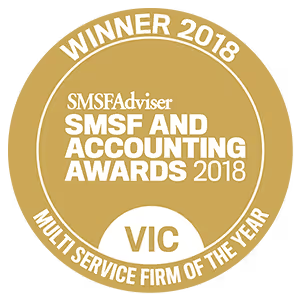As a business owner, there are lots of things you need to consider when looking at selling. Importantly, you need to ensure you’re eligible for small business Capital Gains Tax (CGT) concessions in the first place.
In this article, we take a focus on the $6 million net asset test. We’ll look at what the test is, what the $6 million net asset test includes, and what you can do to ensure you meet the threshold.
Not sure if your business meets the $6 million net asset test? Get in touch with Liston Newton Advisory today to book a free financial strategy session. We can discuss your business’ assets, and tax planning strategies to make your business as tax-effective as possible.
Understanding small business CGT concessions
Small business CGT concessions allow business owners to reduce the tax they pay on a capital gain. They're particularly welcome when looking at selling a big-ticket asset, like a business.
The four main small business CGT concessions are:
- The 15-year exemption
- The CGT active asset reduction discount
- The CGT small business retirement concession
- The CGT small business rollover
[feature_link]You can read about these concessions in more detail here.[/feature_link]
However, a business isn’t just handed these concessions. You have to prove that your business is eligible.
There are two important tests businesses can undertake to confirm they’re eligible for the specific capital gains tax concessions. These are the $2 million revenue test and the $6 million asset test.
The $2 million revenue test is reasonably straightforward: a business owners’ revenue must not exceed a threshold of $2 million.
The good news is that you don’t have to pass both. A business can fail the revenue test but still pass the $6 million asset test.
So let’s take a closer look at this test, and what it means for your business.
So, what is the $6 million net asset test?

The $6 million net asset test, or maximum net asset value test, is an alternative test to the $2 million revenue test.
Under this test, the business owner’s net assets are calculated. If their net assets fall under the $6 million threshold, they qualify for CGT concessions.
So for example, if your business has net assets of $5,999,990, you pass the test. But if your business’ net assets equal $6,000,010, you don’t pass the test, and aren’t eligible for concessions.
It sounds straightforward — but it gets a little more complicated.
What does the $6 million net asset test include?
Under the $6 million asset test, the business’ net value of all CGT assets is calculated. This is done right before the CGT takes place, to ensure the figure is as current as possible.
CGT assets can include:
- The business owners’ CGT assets;
- The assets of any businesses connected with the business owner; and
- Any assets that are used by entities connected with you, if they’re used in relation to a business connected with you.
The crucial thing to remember when making these calculations is that they include all associated CGT assets. This isn’t just your business premises, vehicles, tools, and other assets—it can also include things like business shares, or any rented properties. It covers assets used in other businesses owned by yourself, or businesses that you have a direct connection with.
So there can be quite an expansive list of assets included in the $6 million asset test.
However, it’s a net asset test, so each asset must be considered with any relevant liabilities factored in. So for example, say you have a fleet of vehicles you purchased with a loan, but you still owe $100,000 on the loan. This $100,000 is a liability, so it wouldn’t count towards the net asset test
What is excluded in the asset test?
It’s important to remember that not all assets are included within this test. Assets such as a family home or holiday home, cars or boats, and any other personal assets are all excluded from the $6 million net asset test calculation. In addition, superannuation is also excluded from the asset test.
Is cash included in the maximum net asset value test?
While your personal use assets are not included, unfortunately, cash is included in the maximum net asset value test. So if your business assets total $5,300,000, but you’ve got $750,000 cash in a personal account, this provides a total assessable figure of $6,050,000.
So be careful how much cash you have on hand.
How the $6 million net asset test works
Tim is a business owner who runs a local construction and earthmoving company, Tim’s Construction, and is doing quite well for himself. He owns the freehold on an office for managing the businesses, and the freehold on a warehouse where he stores his equipment and machinery.
He also owns 100% of shares in a local manufacturing business, T Co Manufacturing, that provides the materials and equipment that supply his businesses and local hardware stores.
As Tim is involved directly with each of these businesses, the net market value of all of these assets will be considered when assessing against the $6 million asset threshold.
The net market value of Tim’s Construction is direct business assets are:
[table]
[thead]
[tr]
[th]Assets in Tim’s Construction[/th]
[th]$2,400,000[/th]
[/tr]
[/thead]
[tbody]
[tr]
[td]Freehold on office[/td]
[td]$850,000[/td]
[/tr]
[tr]
[td]Freehold on warehouse[/td]
[td]$1,200,000[/td]
[/tr]
[tr]
[td]Cash in business[/td]
[td]$750,000[/td]
[/tr]
[tr]
[td]Total[/td]
[td]$5,200,000[/td]
[/tr]
[/tbody]
[/table]
The net market value of the assets owned by Tim’s Manufacturing are:
[table]
[thead]
[tr]
[th]Manufacturing plant and associated assets[/th]
[th]$1,500,000[/th]
[/tr]
[/thead]
[tbody]
[tr]
[td]Total[/td]
[td]$1,500,000[/td]
[/tr]
[tr]
[/tbody]
[/table]
In this example, as there are no liabilities against any of Tim’s assets, his net asset position is $6,700,000. As such, he exceeds the $6 million threshold and doesn’t pass the maximum net asset value test.
Strategies for passing the $6 million net asset test
When it looks like your assets are likely to exceed the $6 million threshold, there are a number of strategies you can apply.
If you hold a high figure in cash, like in our original example, this money can be moved elsewhere prior to when the CGT event occurs. You may choose to spend part of this money, or move it into non-assessable assets, such as superannuation, personal assets, or paying down personal debt.
Another way to pass the asset test is to reduce your assets. This can be achieved by selling assets, then moving the money directly into non-income-earning assets. Things like your superannuation, or luxury items.
Tim, for example, could spend the cash he has sitting in his business on a personal use asset, such as a big-ticket luxury item, like a beach house. He could also move this cash directly into his superannuation.
He could also choose to sell enough assets within his construction businesses or sell shares in his manufacturing businesses, and spend or move his money in a similar way. This would put him under the threshold, and he would qualify for the small business CGT concessions.
It’s all about reducing the value of the business assets that you own.
The final word
The breadth and depth of the $6 million net asset test can be confusing. But it doesn’t have to be.
The key is calculating all business assets, and all associated and affiliated business assets. It sounds like a big job, but the important thing is to be methodical.
When done correctly, you can see exactly where your assets lie, and identify where to put strategies in place to reduce the value of CGT assets within your business.
So it pays to have expert support by your side.






